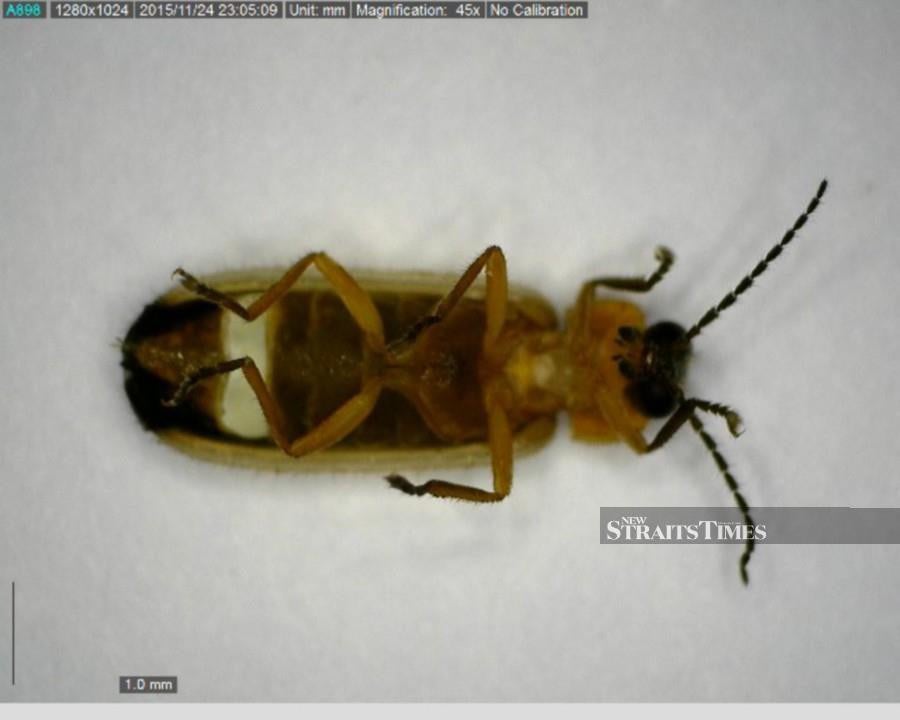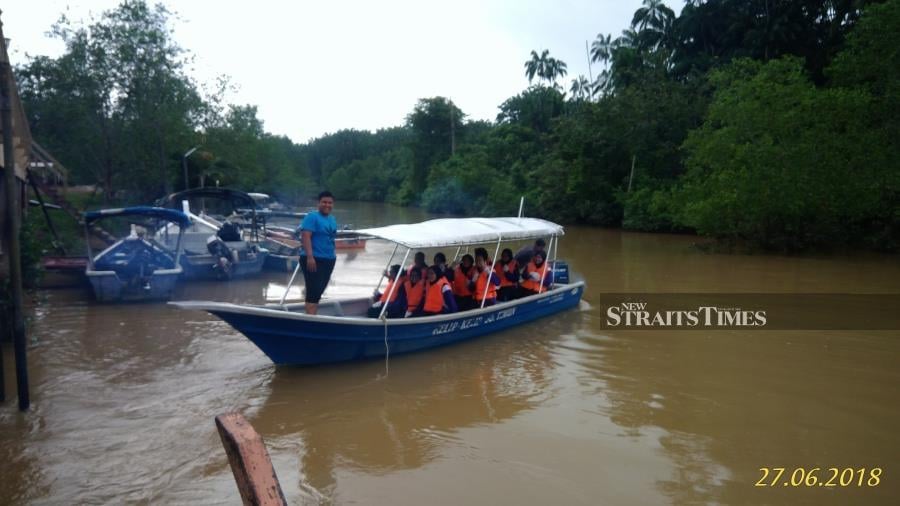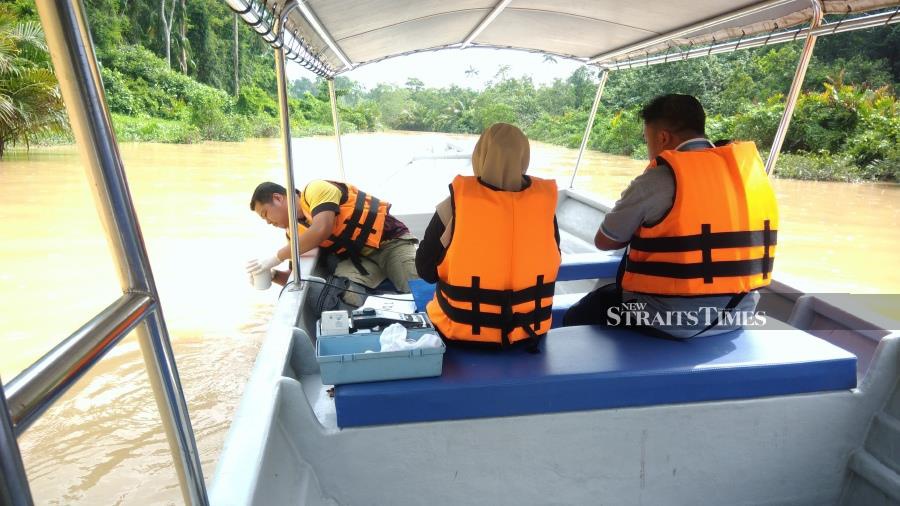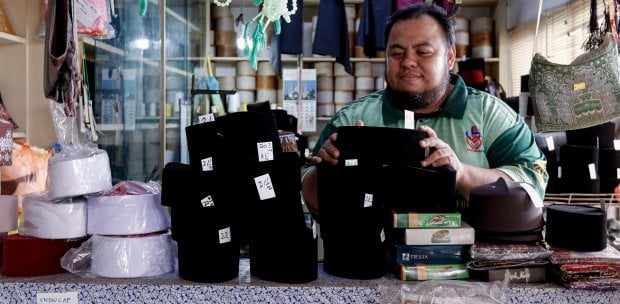ACROSS the country, one of nature’s most magical shows unfold each night. When the right conditions align, a dry, moonless night with calm winds, it’s the perfect setting for dazzling displays of fireflies.
Firefly sightings are possible all year round in Malaysia, and these light shows are produced by small soft-bodied flattened beetles which belong to the species Lampyridae.
Also known as glow worms or lightning bugs, these bioluminescent insects (aptly called kelip-kelip in Malay which means to flicker) have inspired various folk tales throughout the ages.
In Sarawak, the Lun Bawang people believe that good luck follows the hunting of wild boars if these nocturnal beetles were to fly into the fire place the day before.
Along the Selangor river, fireflies are thought to be fingernails of those who drowned in the river.
This insect has also sparked various scientific research. It’s estimated that there are 100 species of fireflies distributed across Malaysia from the approximately 2,000 species found worldwide.
Malaysia is home to a unique genus of fireflies, the Pteroptyx, whose synchronous flashing for mating purpose lights up entire trees and are sought-after as an ecotourism attraction.
Sadly, their signature glow isn’t enough to keep their populations from dwindling, with many firefly species believed to be endangered — parallel to the alarming trend of insect population collapse documented worldwide.
With threats to their colonies ranging from light pollution to habitat destruction, Malaysia is at risk of losing its firefly colonies and their symphony of lights forever.
This then begs the question: What happens if we lose our fireflies?
INTERTWINED MICROHABITATS

Most of us know about the ideal conditions to see fireflies in forested areas along riverbanks, but what about the conditions for these fireflies to thrive?
“Fireflies are a flagship species because they’re charismatic and draw interest from the public. They’re also good bio-indicators for forest habitats because of the complexity of their life cycle,” says DrWan Faridah Akmal Jusoh, a Research Fellow at the Lee Kong Chian Natural History Museum, National University of Singapore.
Wan Faridah is an entomologist who specialises in research on the integrative taxonomy of fireflies (that is, to discover and describe new species according to genetic, ecological and morphological characters), biodiversity and monitoring as well as conservation of wetlands (mangroves, peat swamp and freshwater).
Her firefly studies look at several settings, including urban sites (e.g. Singapore) and riparian zones in Peninsular Malaysia and Sarawak.
She emphasises that any disruption to a firefly’s microhabitat (a small specialised habitat within a larger habitat) will decrease their survival rate because each life stage requires a different microhabitat.
A firefly’s life cycle consists of eggs, larvae, pupae and adults. It takes up to a year for the insect to grow to the adult size of 1-2cm. Adults usually only live for about two months.
The Pteroptyx tener, a synchronous flashing species commonly found in Malaysia, depends totally on the mangrove ecosystem.

Females lay eggs in crevices on moist soil in the tidal flood plains of the river. The eggs then hatch into a predatory larva, feeding on mangrove snails, particularly the Cyclotropis carinata, in which the natural riverside vegetation also is crucial for the snail’s survival.
The ground must not be too dry or soft for the larvae as it will hibernate typically near where nipah and sago palms grow. When it enters the pupal stage, it needs to be safe from predators such as certain birds, lizards, spiders and frogs.
Fireflies produce different light patterns depending on the species, life stages and sex.
Adult fireflies depend on the riverside vegetation, and communicate to the females to mate as they swarm their chosen branches.
Trees such as nibong palms and ferns, nipa palms, other mangrove plants and Sonneratia caseolaris or Berembang trees are among the diversity of plants that support their population.
Wan Faridah stresses that an ecosystem approach should be taken for the conservation of the fireflies.
“There needs to be more research into the conservation and rehabilitation of the firefly habitat which takes into account the various stages of their life cycle,” she says, adding: “The East Coast and West Coast of Peninsular Malaysia have different species which need different habitats for feeding and mating. There are generalist and specialist species. The former can live in many types of environments and have a less specific diet.”
There are firefly species that can live in forests in the cities but globally they’re threatened because of mangrove destruction.
CONSERVATION AND HABITAT REHABILITATION

Other threats are also disrupting the firefly’s mating rituals. Light pollution, agricultural pesticides, forest clearance and water management projects that drain wetlands affect water quality and increase salinity in areas where fireflies reproduce.
Realising that Berembang trees are dominant species for adult fireflies to congregate and mate, the National University of Malaysia (UKM) aims to replant the trees at three key conservation sites.
UKM recently received the largest fireflies research fund in Malaysia from Tenaga Nasional totalling RM1.09 million.
The two-year research seeks to develop a firefly conservation and habitat rehabilitation protocol for sustainable firefly ecosystem within Peninsular Malaysia.
UKM’s Associate Professor Dr Norela Sulaiman says that the research covers Kampung Dew, Semanggol in Perak; Yak Yah in Kemaman, Terengganu and Kampung Sungai Timun, in Rembau, Negri Sembilan.
“We’ll also carry out diversity studies of fireflies and insects together with research on birds, bats and other aquatic life to determine the health of the mangrove river.”
Norela, who is chief researcher of UKM’s Fireflies Habitat Conservation Project at Kampung Dew, adds that the study hopes to establish the elements that affect the Berembang tree, in which land use change including agriculture and housing developments have caused a decline to the plant along the riverbank and with it, firefly habitats.
Several factors have been identified as to why adult fireflies prefer to congregate on Berembang trees to other plants.
Norela and three other UKM researchers found that the epidermal surface of the Berembang tree leaf contained nodules that made it more suitable for fireflies to assemble and mate compared to other mangrove plants.
Other research suggests that the sap of the Berembang tree contains sugar which provides food sources for the fireflies and that the tree happens to be in high abundance in the study areas, making it a dominant tree species.
In addition, fireflies prefer the shaded area while resting on a tree during daytime and the high density of leaves provide cover and enable the fireflies to perfectly flash with synchronicity.
Since the main species of firefly studied for this research is the Pteroptyx tener, UKM hopes to boost ecotourism at the study sites.
Shares Norela: “We want to encourage the local community to plant Berembang trees to increase the population of fireflies by ensuring that these insects can complete their life cycle. Moreover, we hope that this activity could become a sustainable alternative livelihood for the villagers who primarily work as fishermen.”
The spill-over effect, she remarks, would be better catch of fish and shrimps for the fishermen too since the mangrove habitat would be healthier.
“These outreach efforts would only be successful with community awareness and active engagement by locals to conserve ecosystems where fireflies breed. Once we complete the study, we hope to socialise the protocol with the district councils, NGOs and corporations that would be involved in rehabilitating firefly habitats.”
REKINDLING FLICKERS AND HOPES

The warm yellow glow of the Pteroptyx fireflies is a familiar sight for 28-year-old Mohd Syazwan Hussin from Kampung Sungai Timun, Rembau.
He has worked as a boatman and guide for the firefly river cruise in this village for the past two years — skilfully navigating among the tree branches along the Rembau-Linggi estuary located within the state boundary of Negri Sembilan and Melaka where swarms of fireflies light up the night sky.
His grandmother is from this village and he often followed her to see fireflies when he was younger.
He attests that the light shows are not as “merry” as in those days, citing several threats such as illegal sand mining near the Melaka border and rubbish pile-up as issues of concern for ecotourism operators here.
There are five to six boats that bring tourists on the firefly river cruise and fishermen are employed to be boatmen to diversify their income.
Says Mohd Syazwan: “I think we need to have more promotion for the firefly ecotourism in this village. At the same time, we need to balance what’s best for the firefly habitats and to preserve the fishermen’s main source of income.”
He adds that locals here through the Village Community Management Council want to support both activities because they’re aware that healthy firefly colonies are an indicator of a healthy river which is important for the giant river prawns that they harvest from these waters.
Mohd Syazwan’s interaction with researchers from UKM, the Forest Research Institute of Malaysia and other governmental agencies and businesses like TNB have enhanced his understanding of the mangrove ecosystem.
Says Mohd Syazwan: “I now know that there are certain trees that we need to conserve for the fireflies to breed and I’m more alert when there are occurrences of pollution or encroachment on the river.
“Tourists from afar come all the way to this village to witness such beauty. We should feel blessed that we have fireflies in our backyards. I’m still inspired by the sight of these insects at night and I hope we can continue to conserve their populations for our children and grandchildren,” he confides with pride.
Teluk Intan native Casey Goh started a river cruise business called Firefly Marvels in her hometown after getting inspired by her father’s tales of seeing trees lined with fireflies like Christmas trees at night during his fishing trips.
The 33-year-old was prompted to do more research on river cruise ecotourism after being approached by the Teluk Intan Tourism Association last year.
Shares Goh: “My siblings and I also thought that this business would be good for my parents as their retirement plan, to keep them active and do things that they have passion in. Together with all my sisters, we invited researchers, birders, photographers and others to help us gather more information on the current health of fireflies and birds in Teluk Intan.”
She says that they were awed by the scene of thousands of fireflies covering the trees and waves of birds coming back to roost during sunset.
Goh hopes that visitors will be able to get a first-hand experience in firefly watching and bird watching.
“We hope that from our cruise we can create awareness to visitors of the importance of taking care of the river and maintain firefly habitats so that our future generations stand a chance to admire these beauties.”
As a firefly researcher, Wan Faridah cautions of the threat of extinction for Malaysia’s firefly species if issues are not addressed.
“There are firefly species in Malaysia which are already extinct in Singapore. At the moment, we don’t have a check list for species in Malaysia because there are a few taxonomists doing this work.”
But she’s hopeful that the “magic” of the firefly’s bioluminescence will not only capture our imagination but also the attention and the urgent need for conservation.





